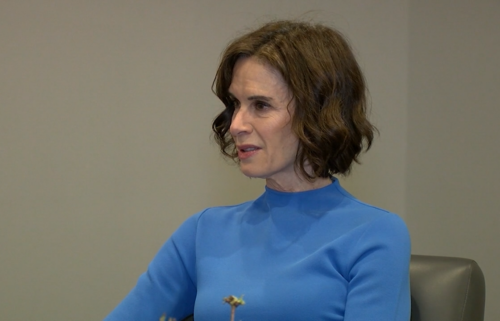Here’s what the Supreme Court’s Affordable Care Act ruling means for you
The Affordable Care Act remains the law of the land.
The U.S. Supreme Court’s dismissal Thursday of the latest Republican-led challenge to the landmark health reform law, widely known as Obamacare, leaves in place the existing system.
The act, which has survived multiple Republican attempts to tear it down in the 11 years since it was signed, has had a sweeping impact on the nation’s health care system and on the lives of tens of millions of Americans.
Roughly 31 million people have coverage thanks to the Affordable Care Act, including through the Obamacare exchanges and the expansion of Medicaid to low-income adults.
The law also allows parents to keep their children on their health insurance plans until age 26 and enables patients to obtain free mammograms, cholesterol checks and birth control.
One of the law’s most popular provisions is its strong protections for those with pre-existing conditions, including barring insurers from denying coverage or charging higher premiums based on people’s health histories.
Nearly 54 million Americans — or 27% of non-elderly adults — have pre-existing conditions that would make them uninsurable in the individual market prior to the law, according to the Kaiser Family Foundation. As many as 133 million Americans could have been denied coverage, had their benefits delayed or curtailed or had to pay more for individual market policies because of their medical backgrounds, according to an Obama administration report.
Over the past year, as the coronavirus pandemic and resulting economic downturn have gripped the nation, the Affordable Care Act has served as a safety net for Americans who’ve lost their jobs — and their health insurance along with it — and for the uninsured seeking coverage. Enrollment in both the Affordable Care Act exchanges and Medicaid have risen since the outbreak began in March 2020.
Since taking office. President Joe Biden has moved to strengthen the Affordable Care Act and embed it even more deeply in the nation’s health insurance system, including swiftly moving to overturn many of former President Donald Trump’s efforts to chip away at the law.
Biden has already reopened enrollment in the federal Obamacare exchange and beefed up marketing, outreach and assistance in signing up for policies. About 1.2 million people so far have signed up on the federal exchange for 2021 coverage during the special enrollment period, which runs from mid-February through mid-August.
And his administration is reversing Trump administration approvals of work requirements in Medicaid, which threatened to strip coverage from many people who gained it through Obamacare’s expansion of the program.
Though several of the Affordable Care Act’s provisions are popular with most Americans, the public remains deeply divided over the law itself. Overall, some 54% of people had a favorable opinion and 39% had an unfavorable opinion of Obamacare in February, according to the Kaiser Family Foundation.
But breaking it down by party, 82% of Democrats favored the law, while only 17% of Republicans did. And 75% of Republicans had an unfavorable view, compared to 10% of Democrats, the Kaiser poll found.
The case was brought by a coalition of Republican state attorneys general after Republican efforts to repeal it failed in Congress.
The states argued the act’s individual mandate was rendered unconstitutional when Congress reduced the penalty for not having coverage to $0, and therefore, the entire law must fall. The Trump administration sided with the Republican states and urged the justices to strike down the law — a position the Biden administration reversed in February.
Here’s how the law has reshaped American health care:
Individual market
The Affordable Care Act has had the greatest impact on the individual market, which was largely unregulated prior to the health reform law. Some 11.3 million people were enrolled in Obamacare plans for 2021, as of February.
In addition to banning insurers from basing coverage on people’s medical histories, the law ended the practice of insurers imposing annual or lifetime caps on benefits, and it also placed limits on annual out-of-pocket spending. It mandates that insurers provide more comprehensive benefits, including medication, maternity and mental health. It prevents insurers from charging women more and restricts premiums for older folks to no more than three times those of young adults.
Obamacare set up health insurance exchanges to allow Americans to shop for individual policies and created federal subsidies so low- and moderate-income enrollees could buy plans for less than 10% of their income. It also limits the deductibles and co-payments for lower-income policyholders.
Biden’s $1.9 trillion relief plan beefed up the subsidies for two years to respond to Americans’ chief complaint — that the Affordable Care Act was not affordable. Many middle class Americans who didn’t qualify for subsidies had dropped their coverage, saying premiums were too pricey.
Under the new law, consumers will pay no more than 8.5% of their income for coverage. Also, those earning more than 400% of the federal poverty level — about $51,000 for an individual and $104,800 for a family of four in 2021 — are now eligible for help. Lower-income enrollees can have their premiums eliminated completely for two years, and those collecting unemployment benefits can sign up for coverage with no premiums in 2021.
Americans can still sign up for 2021 coverage on the Affordable Care Act exchanges.
Biden launched a special enrollment period for the federal marketplace that runs until August 15. Most states that run their own exchanges have also given residents more time to select policies. Some 1.2 million people have signed up for coverage during the special enrollment period, though May.
Several million more people purchase individual plans outside of the exchanges. They cannot apply for subsidies but receive all of the other benefits.
The Trump administration had sought to undermine the law by broadening alternative coverage options — such as short-term health policies — that don’t have to adhere to all of Obamacare’s provisions, particularly those protecting people with pre-existing conditions. As a result, many of these plans have lower premiums. Biden is looking to reverse many of these measures as he strengthens the law.
Medicaid
Before Obamacare, most Medicaid enrollees were low-income children, pregnant women, parents, the disabled and the elderly.
The health reform law opened up the program to low-income adults with incomes of up to 138% of the poverty threshold — currently about $17,800 for a single person — in states that opted to expand their Medicaid programs. The provision allowed more low-income parents to enroll and provided a new pathway for adults without dependent children to gain coverage.
So far, 38 states and the District of Columbia have expanded Medicaid or passed ballot measures to do so. Roughly 14.8 million Americans have gained coverage under this provision, as of December, according to the Biden administration.
The federal government paid 100% of the costs of the expansion population for the first three years and slowly lowered the reimbursement rate to 90%, where it will remain.
The stimulus package provides an incentive for the 12 holdout states to expand Medicaid. They will receive a 5 percentage point increase in their regular federal Medicaid match rate for two years. More than 4.3 million uninsured Americans would become eligible for Medicaid if these states expand the program.
Medicare
The Affordable Care Act has meant lower premiums, deductibles and cost-sharing for the more than 61 million senior citizens and disabled Americans enrolled in the program.
The health reform law made many changes to Medicare. It slowed the growth of payment rates to hospitals and other providers, reduced payments to Medicare Advantage plans and improved benefits for enrollees.
Under Obamacare, Medicare beneficiaries receive free preventative benefits, such as screenings for breast and colorectal cancer, heart disease and diabetes.
RELATED: Hill Democrats aren’t waiting for Biden on health care reforms
And the Affordable Care Act helped close the gap in Medicare’s drug coverage, which was completely eliminated in 2020.
But the law did result in higher costs for more affluent beneficiaries. The law initially froze the threshold for the Medicare premium surcharge at $85,000 for individuals and $170,000 for couples, so more people became subject to it. That freeze has now been lifted so the thresholds are updated annually. They are currently at $87,000 for individuals and $174,000 for couples.
The Affordable Care Act also added a premium surcharge on drug coverage for higher-income enrollees.
Employer-sponsored insurance
Obamacare requires that companies with at least 50 employees provide affordable insurance to their staffers who work more than 30 hours a week.
This mandate didn’t have a major impact on the 150 million-plus workers who are insured through their jobs. Most larger employers already offer coverage for full-time workers. However, setting the bar at 30 hours a week prompted some employers to extend coverage to more of their staff, since many companies had considered that threshold to be part-time.
Also, the law allows children to remain on their parents’ plans until they turn 26. This has proven to be one of the more popular Affordable Care Act provisions and has helped lower the uninsured rate of this age group.
Workers also no longer have to pay for contraceptives and preventative screenings, such as colonoscopies and mammograms. The law requires these be provided free of charge.
The Affordable Care Act also prohibits employers from imposing annual or lifetime limits on benefits and caps out-of-pocket spending.
Obamacare also had an impact on employees who work at companies with fewer than 50 workers. Insurers can no longer ban workers with pre-existing conditions or ask them to pay more. The law requires plans to cover an array of benefits, including maternity, mental health and prescription drugs. And it limits insurers from charging older workers premiums more than three times those of younger workers.




